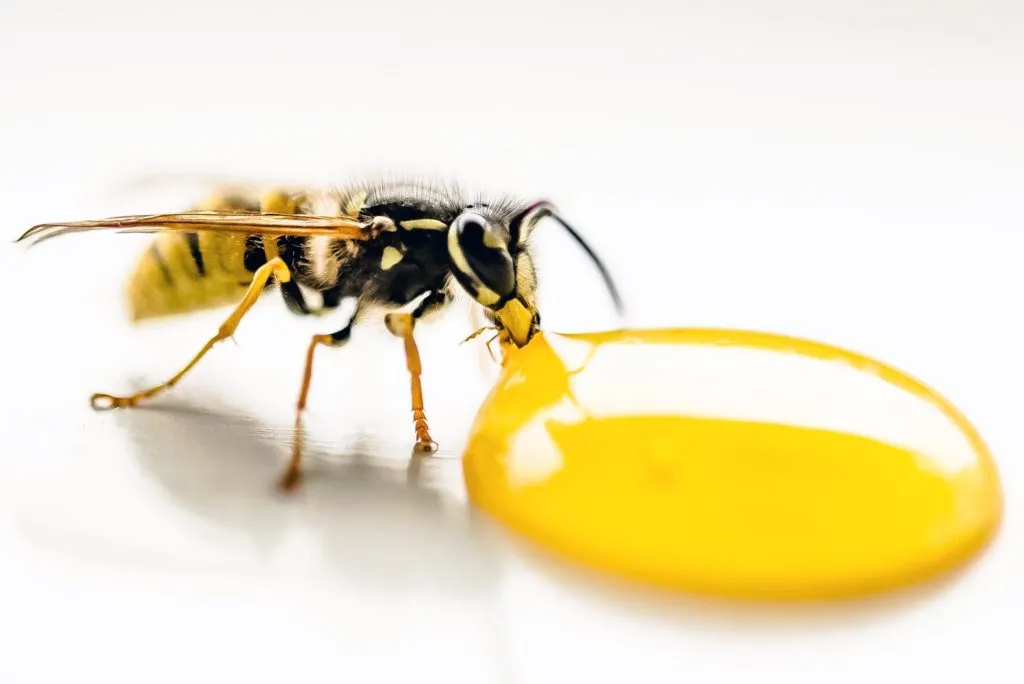Wasps

Stinging Insects
December 5, 2024Dominion offers a solution for all types of stinging and non-stinging bees, wasps, hornets and yellow jackets. Each type of stinging and non-stinging insect have different methods of control. Call us for help on identification and solutions to get rid of the nuisance. You may also email our support team at Info@dominionpestcontrol.com with a picture of your pest for identification or for general inquiry.
We treat for all ground dwelling, and wood destroying bees as well. Some of the most common stinging and non-stinging insect in Lancaster and York PA include the Yellow Jacket, European Hornet, Paper Wasps, Cicada Killers, and Carpenter Bees. Call our office for more information or to schedule an appointment at 717-393-7879.

Exterminators Winning the Race to Eradicate Spotted Lanternflies
June 20, 2022Spotted lanternflies: They are more colorful and attractive than most pests, so why are they so bad?
First, they are an invasive pest that feeds on a large variety of plant species, including those in the agricultural, timber, and ornamental industries, as well as backyard plants.
While they may not actually kill the trees they feed on, they are considered to be a plant stressor and may contribute to long-term weakening of established plants and trees. When combined with other stressors such as other insects, diseases, or weather, they can cause significant damage. They especially settle in grapevines and maple or black walnut saplings or trees.
As for their appearance, they belong to the insect family Fulgoridae, or planthoppers. This group of insects was named after “Fulgora,” the Roman goddess of lightning, because they were thought to be luminescent like lightning bugs. However, they are not!
Battling the spotted lanternfly in South Central Pennsylvania
The lanternfly eggs are laid in the fall of the year (September to November) and hatch in the spring (late April to June). In south central Pennsylvania, the adult flies begin to emerge in July and remain active as adults until they are killed by hard freezes later in the fall. The adult flies are large, about 1 inch in length, have black bodies, and are very mobile. Their forewings are gray with black spots, and the tops are black with gray veins, while their hind wings are red, black, and white.


Spotted Lanternflies Help Stinging Insects Thrive
September 2, 2020No doubt about it. Stinging insects are some of the most common pests we’re asked to control. Increasingly, service calls to kill the Spotted Lanternfly are high on the chart too.
This year, we’ve gotten more calls than ever regarding both! There’s an abundance of bald face hornets, yellowjackets, wasps, and European hornets joining the swarms of spotted lanternflies. (European hornets look like Murder hornets, but they are not. The Asian Giant hornet is dubbed the “murder hornet.” Learn more.)
Service calls to control yellowjackets, wasps, and other stinging insects have increased dramatically this year and started earlier. Greg Pettis, Dominion’s president, recently went out into the field to help catch up on stinging insects calls. Scary!

Are Murder Hornets Teaming up with Lanternflies and Stink Bugs to Ruin Your BBQ?
July 10, 2020Solitary Wasps
August 28, 2009If you are seeing wasp-like insects hovering over a lawn area, they may be Solitary Wasps. These wasps are hunters, looking for insect prey. There are different species of Solitary Wasps, but all of them are hunting other insects. Some are looking for spiders, grasshoppers and crickets. Still others, will hunt ants, flies, bees, butterflies and moths. Most Solitary Wasps are not harmful to people, and will in fact, fly away to avoid human contact when approached.
When a Solitary Wasp catches it’s prey, it paralyzes it, and carries it back to its nest, which many species will have in ground burrows. After carrying them into their nest, they lay eggs on them. The prey will live until the larvae emerge to eat the prey. Most species never see their parents, since they move on after giving their offspring all they will need to survive.
Yellowjackets & Other Stinging Insects
March 21, 2009Yellowjackets can make a nest in the ground or inside structures such as walls in a home or business. If you have this situation, do not spray! If you do, you risk pushing them inside where they will not be able to get out. Wasps can make nests behind shutters, up in corners of eaves, inside lamp posts, etc. And of course, you have your Hornets that make potentially basketball size nests anywhere.
All of these stinging insects can be controlled by Dominion Pest Control. For some, it might be recommended to have a regular quarterly powerspray on the perimeter. In any event, control for pests is fairly simple. Depending on the situation, we may use a dust, or a non-repellent transferable product whereby the insects transfer the product one-to-another.
- 1
- 1-6 of 6 results